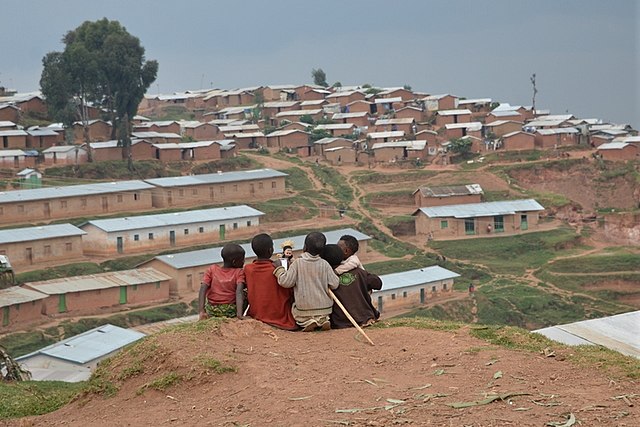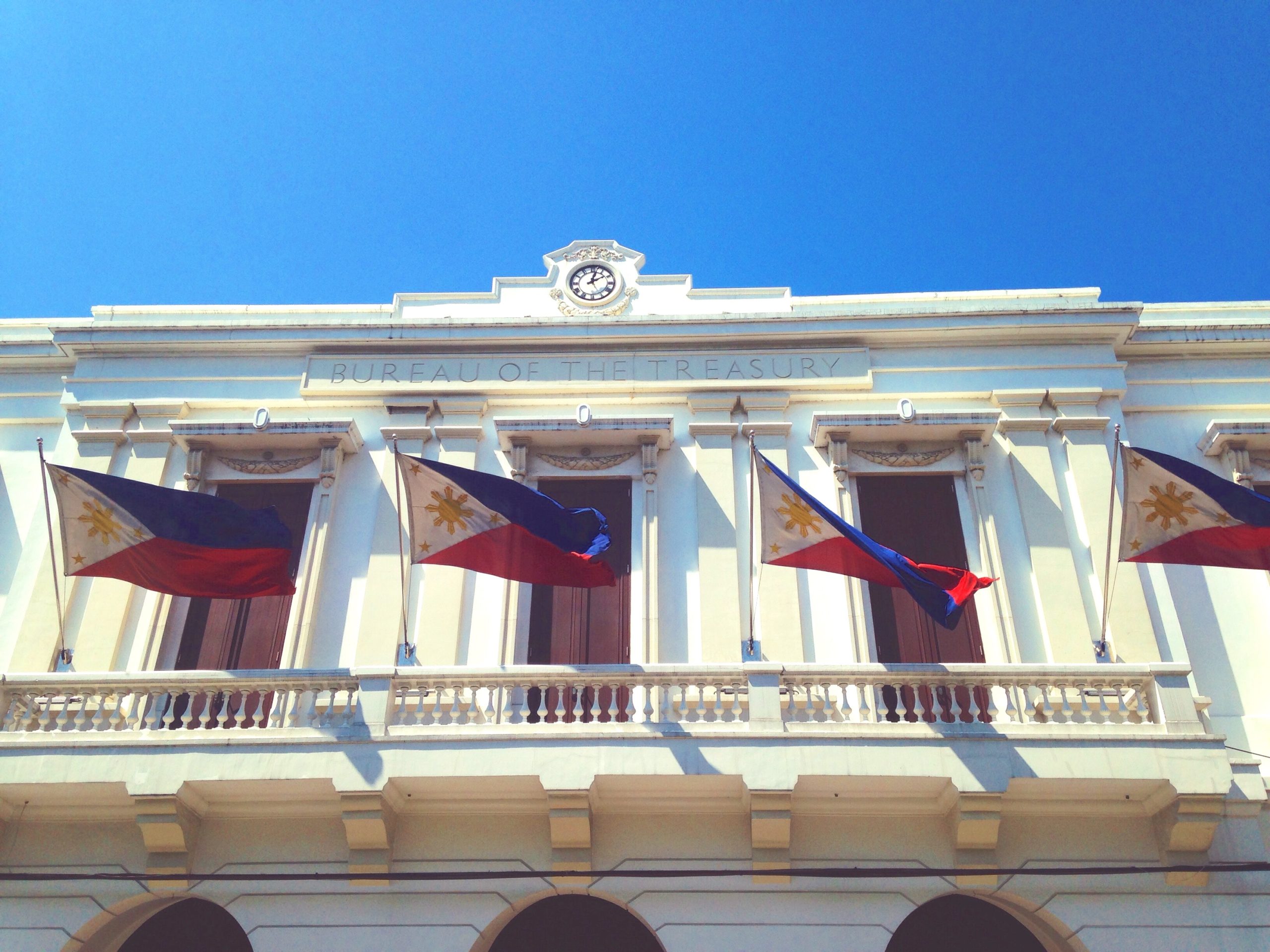Books & Culture
Walking Into the River
Virginia Woolf, the migrant caravan, and the fluid boundaries between people

As the caravan of immigrants crossed the Usumacinta river that marks the border between Guatemala and Mexico, a Mexican police helicopter used the downdraft from its rotors to make waves rise on the river, to make the passage harder for the people walking North, away from violence. The Associated Press reported that because of the choppy water a man drowned in the river. From his bird’s eye view, the people on either side of the water must have seemed like ants to the pilot, barely people.
The voices of Virginia Woolf’s novel The Waves ring out from the dark to insist on the humanity of the characters. Readers get no marking beyond the character’s name, so sometimes characters blend and blur together, but then we get markers of individuality: a banker father in Brisbane, a consciousness of beauty, a desire to care for wild things. The way the voices are woven together, even the way the book is laid out, seems to suggest at once six voices and one. Bernard, the writer among the five friends, is often the one to put words to this argument, to the idea that “we [suffer] terribly as we [become] separate bodies.” This argument for a kind of borderless existence that can recognize and envelop all of humanity is not only a political argument, but one that is deeply entrenched in Woolf’s sense of morality and religious self.
In her autobiographical essay, “A Sketch of the Past,” Woolf proclaims that what is real is not Shakespeare, or Beethoven, or even God — or said in another way, what is real is not countries or borders or presidents — and that instead “we are the words, we are the music, we are the thing itself.” Instead of an unreal God, the thing itself, the thing that replaces God in Woolf’s personal pantheon, is made up of individuals, a pattern at the back of life that is, in fact, life itself. What does it mean to revere the human as one might the divine?
The thing that replaces God in Woolf’s personal pantheon is made up of individuals.
What I can tell you about helping people fill out asylum applications will sound a lot like voices from the dark: snippets of story, the 20 worst moments of 20 people’s lives, one after the other and stripped of names and faces, so depersonalized as to seem meaningless. All their stories are shaped by the same forces: colonialism, U.S. imperialism and the “War on Drugs,” racism, violence, deportation, misogyny, poverty. But when I hand someone a tissue or bring them a half-full glass of water so they don’t spill it with shaking hands, I am also attending to an individual, marked and shaped by the limits of their own lives and not at all these big textbook forces.
The experience of actually helping people complete the application, of sitting with them, is one that demands I recognize the humanity of the person I’m talking to. People have shown me their scars, have asked to take a break because their hands were visibly shaking, they’ve shown me news clippings and given me handwritten letters of things they still couldn’t say aloud.
Do you fear harm or mistreatment if you return to your home country?
If “Yes,” explain in detail what harm or mistreatment you fear; who you believe would harm or mistreat you; and why you believe you would or could be harmed or mistreated.
Are you afraid of being subjected to torture in your home country or any other country to which you may be returned?
If “Yes,” explain why you are afraid and describe the nature of torture you fear, by whom, and why it would be inflicted.
Water runs deeply through Virginia Woolf’s life and work. Her earliest childhood memories, in her essay “A Sketch of the Past,” are of lying in bed and listening to waves lap up on the beach outside, and realizing the joy of her existence. In her writing-about-writing, she employs images of water and drought: she dives amid the waves when the writing is easy, and wanders the desert when it is not. In To The Lighthouse, the Ramseys and their guests are more surrounded by water than usual on the Hebrides, the furthest push of Britain into the Atlantic, and still they try to reach beyond it, long for the lighthouse itself just one small island further. In The Waves, interstitial scenes have the sun coming up over the water, waves lapping on the shore, a regular return to a lake or an ocean. Woolf spent much of her married life along the banks of the River Ouse, where she loved to walk in the marshes along the river, gloried in the sight of a flooded river valley.
Rivers, of course, are not only water: they often represent edges, borders, boundaries, thresholds, a space between, or a road, a route, a path to freedom. Gloria Anzaldúa, the writer who grew up and spent her life on the banks of the Rio Grande, famously refers to this border, her border, her river, as “una herida abierta where the Third World grates against the first and bleeds. And before a scab forms it hemorrhages again, the lifeblood of two worlds merging to form a third country — a border culture.” A river of blood, a wound of some kind of injustice. The Nile after the first plague, and the Israelites escaping along its banks. Slaves following the water spilling from the drinking gourd into the Mississippi northwards, the rivers between the land of the living from that of the dead in Woolf’s beloved Greek mythology, as well as in ancient Egyptian cosmology. All that time spent along and in and across the river, splashing in it to throw off the dogs, is time between: a space between states both political and existential, a liminal third country on the edges of all others.
All that time spent along and in and across the river is time between: a space between states both political and existential.
Virginia Woolf, of course, also knew the draw of the river’s threshold. A few days before her death, Leonard, her husband, wrote in his journal that she had come home soaking wet, odd for a Sussex March, and claimed she had fallen into the River Ouse near her house. This only seems portentous because we know that she would walk into that river in little more than a week, stones in her pockets. Her suicide notes, addressed to Leonard and her sister Vanessa allude to fear of future madness, fear of an oncoming war, an inability to write or to read. Walking into a beloved river, a familiar well-loved landscape as a way to slough off the dangers of uncertainty, a way of walking across a doorway.
A lot of our most dramatic stories of immigration and people seeking refuge involve taking to the sea. The Mediterranean is crossed regularly in plastic dinghies by families escaping famine and economic and political hardship in North Africa. For some time, the Cuban immigration policy was known as “wet foot, dry foot,” in deference to that first step onto some South Florida beach after a 90-mile ocean crossing, usually on a raft. Eight hundred thousand refugees worldwide, recently in danger of being deported from the United States, are known as “boat people” due to their rapid, sea-borne egress from American bombs falling on their native Vietnam. The myth of our national founding itself is based on a group of people climbing aboard a boat and crossing waters in search of a better life and religious freedom.
The caravan is different from this, and so has been construed as incomprehensible by some — motives other than longing for a better life pressed onto those walking by those who don’t understand the violence they are escaping. The caravan put one foot in front of the other and in this way crossed a nation, down roads and up mountains and along and across rivers, but also across deserts. If taking to the sea is understandable because it requires just a single decision, a leaping off, then walking across a continent for days, weeks, months, miles at a time, seems incomprehensible because of the sheer repetition, the reiteration of every day, every step, making the decision again. What toll on the body? What aching, what calluses, blisters, skin rubbed raw? What throbbing muscles carrying your child on your back for hundreds of miles?
If taking to the sea is understandable, then walking across a continent seems incomprehensible.
This matters because this is how we encounter each other: in our bodies. Woolf’s novels are full of characters feeling for others and embodying someone else. While her novels play fast and loose with the mental boundaries between one character and another — one moment you are in Mrs. Ramsey’s head and the next in Lily’s, a flash or glance the only thing separating them — the body-to-body boundaries that Woolf dissolves stand out as signifying the deepest kind of connection. An early version of Mrs. Dalloway, standing in a glove shop, imagines that the shopgirl is on her period, and daydreams about sending her to rest at her house in the country. The novel version of Mrs. Dalloway, during her final, dazzling party, feels the death of Septimus Warren Smith in herself: “Up had flashed the ground; through him, blundering, bruising, went the rusty spikes. There he lay with a thud, thud, thud in his brain, and then a suffocation of blackness. So she saw it.” Even Mrs. Dalloway’s parties, with their minute attention to creature comforts, are a reflection on this kind of caretaking of one’s neighbor.
And then, of course, we have Bernard in the final section of The Waves, finishing the work of unifying his friends and himself: “Here on my brow is the blow I got when Percival fell. Here on the nape of my neck is the kiss Jinny gave Louis. My eyes fill with Susan’s tears. I see far away, quivering like a gold thread, the pillar Rhoda saw, and feel the rush of the wind of her flight when she leapt.” From the moment that Mrs. Constable, the nurse, squeezed a sponge full of warm water over his back, “and out shot, right, left, all down the spine, arrows of sensation,” and gave him his body, his sensations for “as long as we draw breath, for the rest of time,” he seeks to undo this work, to dissolve back into sensations at once his own and not. Being in a body, and the feeling that comes with it, is altogether too much for Bernard. But even when he seeks to melt out of himself, the thing that sets off this insubstantiality, this being “edged with mist,” is, of course, words: “when we sit together, close…we melt into each other with phrases.” Through Woolf, Bernard understood that it is phrases, it is words, it is stories that allow our edges to become tenuous, that allow us to be open to others. It is voices from the dark, telling us what they see.
Everything I can imagine about reading asylum applications probably also sounds like voices from the dark. I imagine file cabinets or banker’s boxes, stacked 20 deep, a cavernous warehouse of stories, and a man in a brown uniform shirt pulling a box out, as if from the sea, and bringing it to a fluorescent office, all standard government-issue, where another man in a brown uniform shirt reads them, or a judge in chambers does, one after the other.
In my time helping people fill out applications — less than a year — I probably helped about ten families attach passport-style pictures, sign in triplicate. Every week, 20 or 30 families came to the pro-se clinic. Every week about a third of these families finished their applications, took them to the ICE offices and immigration court at 26 Federal Plaza in New York City. On top of that, every application filled out by someone on their own, every application turned in by an immigration lawyer taking a pro-bono case. Anyone arriving in the country without papers has a year to apply for asylum, to present themselves for a “credible fear interview” so that the federal government can assess how much they are to be believed.
At 26 Federal Plaza, their applications get processed, stacked, numbered, indexed, passport-style photos looking out from a back page. Asylum seekers must present themselves at the ICE offices once a month, where they may get deported, or asked to buy their own plane tickets home, or they might simply be asked to sign a piece of paper and go on their way. Some people get ankle monitors tracking their every movement and an officer assigned to their case who may not know the story, just the whereabouts. It is not until the court date that whoever has read their application, has read these 150-word snippets of their trauma, is presented with the actual human in front of them. Thanks to an abundance of cases and an artificial scarcity of judges, it can often be months, or even years years, between the time an application is submitted and the asylum seeker’s court date. At the clinic, we were told to submit applications even in cases that seemed like a long shot. The longer a case took to work through the system, the longer someone had here, in safety. Still, the distance between their words and the bodies that lived them had time to calcify. It’s not just Bernard’s phrases that soften us, especially not when they’re phrases that have been translated by strangers, hacked up into tiny bits, fundamentally altered and alienated from the person they belong to, stuck into a weapon of the bureaucracy.
The longer a case took to work through the system, the longer someone had here, in safety.
Because that’s what the system has slowly transformed into: bureaucracy as a weapon of the state to increase fear, to make asking for asylum — a right granted by international law — feel like a criminal act. The caravan threw conservative media outlets, and the president, into a frenzy: They worried about ISIS members and gang members and murderers and drug dealers “blending in” with the families in the caravan, they worried about jobs being stolen and public services being taken advantage of. However, the criminalization of seeking asylum has been going on for a long time before this round of highly-publicized measures. Undergirding this last panic, and the Obama-era’s expedited deportations of unaccompanied minors, and the Bush-era’s tacit support of groups of Minutemen vigilantes, and the Clinton-era’s legislation to make more crimes deportable offenses, and all the way back to the earliest laws about citizenship and who belonged — undergirding all of these is the same old worry. The worry that allowing too many brown, Spanish-speaking immigrants north of the border will, in some way, fundamentally shift our national character, would change what an American looks like, sounds like. It’s a reaction at once disproportionate and cruel, appealing to our basest natures.
This kind of fear, although divorced of its American context, runs through Woolf’s work as well. For all the imaginative beauty of her characters’ fluidly bounded bodies, Woolf did not often account for substantial differences between them. The Waves, for example, is fundamentally about a group of six friends who are not so different from each other: all are upper- to middle-class, British, white, all with nannies and servants and boarding schools. What does it mean to elide boundaries between yourself and others when those boundaries are composed of perhaps more superficial stuff, when there are shared experiences undergirding all of you? This inability to reckon with difference also stretched into her personal life. In writing about her husband’s family in her journals and letters, Woolf often refers to them offhandedly and flatly as Jews. She uses the N-word casually in Between the Acts, not in the mouth of any character, but in that of the narrator. Despite her devotion to her “society of outsiders,” in Three Guineas, it seems Woolf sometimes did not know what to do with actual outsiders. In other words: What happens to Bernard’s project when, from the very start, bodies do not have the opportunity to become separate because they’re immediately marked as such by the world?
What does it mean to elide boundaries between yourself and others when there are shared experiences undergirding all of you?
Woolf’s surviving answers to these questions may not be everything we might hope for, but it is possible to take the best of her argument and carry it forward into the future beyond her — a project she likely would have intuitively understood and wanted. The answer lies in Woolf’s favorite image: that of the wave.
After the play in Between the Acts, Mr. Streatfield, the town’s bumbling reverend, gets up to make a speech and a final plea for funds for the church roof. “We are members one of another. Each is part of the whole… We act different parts; but are the same.”
Later, Mrs. Swithin asks Isa if she agrees: “‘Yes,’ Isa answered. ‘No,’ she added. It was Yes, No. Yes, yes, yes, the tide rushed out, embracing. No, no, no, no, it contracted.” It’s equivocation, but it’s also meaning. Just as waves on the surface of the sea are all made up of that sea, they also spray up into the air, each one unique in its moment, in its shape, in its path. It is possible to hold our differences and nevertheless understand that we are bound up in each other, all the same stuff as the sea.








